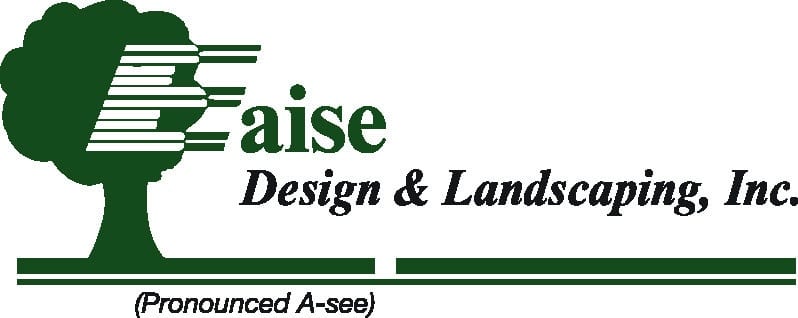A lot of homeowners assume that mulch is an aesthetic addition to a garden bed, and not much else. Do you want dark mulch, red mulch, or light mulch, and how much?
Discussion over… right?
Mulch is actually a complex and crucial component of any planting bed, contributing to the mini ecosystem you’re developing. Besides just looking nice, it helps to retain moisture, control weeds, regulate temperature, and add nutrients to the soil. We always emphasize this as part of our mulching services, educating customers on how important a role it really plays.
So, this mulching thing is a big deal, but how do you know what kind of mulch to get, and how much?
Let’s dive into some practical tips and takeaways.
Calculating the Amount of Mulch You Need
Here’s a quick answer: typically a layer of mulch that is 2-3 inches deep is ideal for most garden beds. The balancing act is not having too thin a layer, which won’t yield the benefits you want (more on that below), while also not being so deep that the plant’s roots are suffocated.
So, how do you determine how much mulch you need to buy? It all starts with some basic math (hopefully you don’t get any middle school flashbacks).
Simply measure the length and width of your bed and multiply the two numbers together, giving you the total square footage you’re working with. For example, if your bed is 10 feet long and 5 feet wide, the square footage would be 50 square feet.
Since mulch is sold by the cubic yard, it’s important to know that a cubic yard of mulch covers 324 square feet one inch deep. So, here’s a quick calculation to help you know much mulch you need:
- Determine the square feet you’re covering by getting the area of the space, as we described above (length times width)
- Next, multiply the square footage by the depth you want the mulch to be
- Finally, divide that number by 324
So, if you have 200 square feet of garden bed and you want it to be covered in 3 inches of mulch, your math would look like this: 200×3=600, then 600/324. In this case you’d need 1.85 cubic yards of mulch (maybe just round up to 2).
Easy peasy. Sort of.
Choosing the Right Type of Mulch
There are many different types of mulch available, each with their own benefits and drawbacks. Here are a few of the most common:
- Organic Mulch: This type of mulch is made from natural materials like bark, leaves, and grass clippings. It’s also great for retaining moisture in the soil and providing nutrients as it breaks down. However, organic mulch can attract pests and may need to be replaced more frequently.
- Inorganic Mulch: This type of mulch is made from materials like rocks, stones, and rubber. It lasts longer than organic mulch and doesn’t attract pests, but it doesn’t provide any nutrients to the soil.
- Wood Chips: Wood chips are a popular type of organic mulch that can help protect plants from temperature extremes and retain moisture in the soil, acting as a sort of shield. Like traditional organic mulch, it can also attract pests and doesn’t last as long since it’s breaking down and feeding your bed.
- Pine Bark Nuggets: This type of mulch is made from the bark of pine trees and is a great option for retaining moisture in the soil. It’s also long-lasting and attractive. Getting all those benefits comes with a higher price tag, but since it also tends to last longer there’s more long-term value.
So, how do you actually pick?
Consider your specific needs and preferences. Do you want something long-lasting or easy to replace? Do you want something that adds nutrients to the soil or doesn’t attract pests? Answering these questions can help you determine the right type of mulch for your garden bed. Additionally, it’s important to note that some plants may prefer certain types of mulch over others, so do some research on the plants in your garden bed before making a final decision.
Pro Tip! Avoid Weed Seeds
One of the main benefits of using mulch is that it helps to control weeds, right? Some types of mulch, like straw, can actually introduce weed seeds into your garden bed. To prevent this from happening, choose a type of mulch that has been sterilized or heat-treated, or purchase your mulch from a reputable supplier.
Applying the Mulch
Once you’ve chosen the right type and amount, it’s time to apply it. Start by removing any weeds or debris from your bed, and then apply a layer of mulch that is 2-3 inches deep. Be sure to spread the mulch evenly and avoid piling it up around the base of your plants – this can cause them to rot.
Maintaining Your Mulch
To keep your mulch looking fresh and performing its best, it’s important to maintain it throughout the growing season. It’s not a “set it and forget it” material.
As the mulch breaks down over time, it will become less effective at retaining moisture and controlling weeds. To combat this, simply add a new layer of mulch on top of the existing layer every year or two. This will not only help to maintain the benefits of the mulch, but it will also give your garden bed a fresh and tidy appearance.
What’s the Takeaway?
Don’t just run out and buy mulch. It’s important to weigh your options, your existing plants, future plants, and your budget. Remember too that mulch can be a valuable contributor to the health and wellbeing of your garden bed, but only if you pick the right type for your needs and then maintain it properly.
Have more questions about mulching services or landscaping? Contact us at Eaise Design & Landscaping! We’d love to chat with you.
